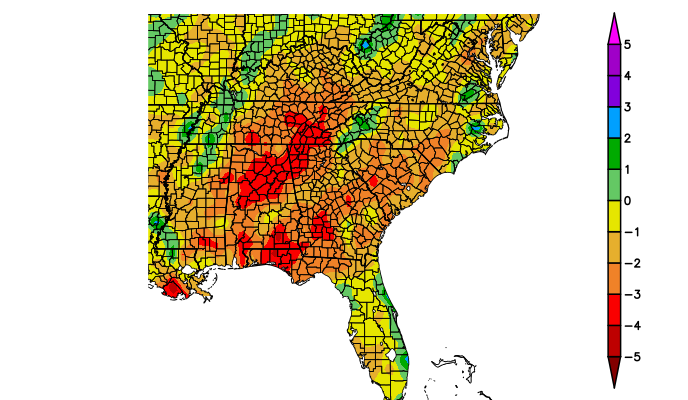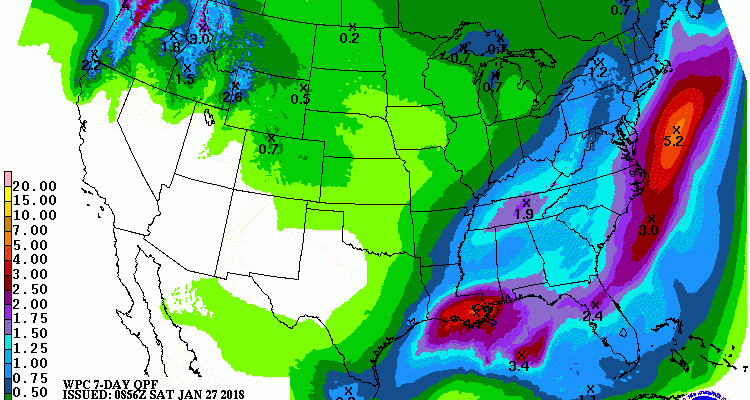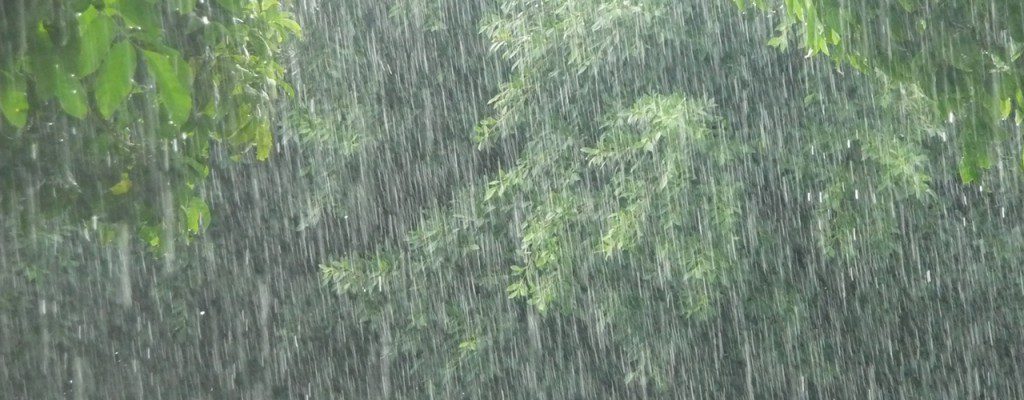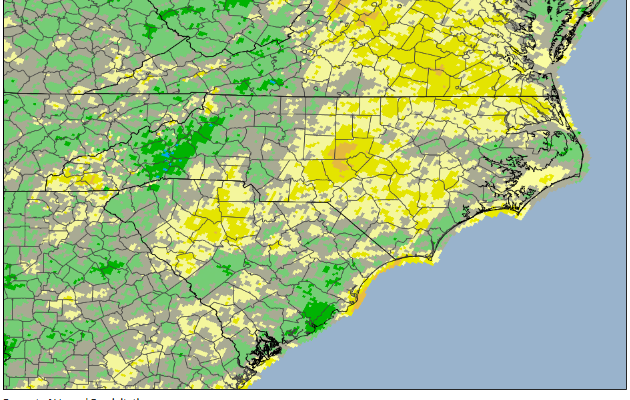-

According to an article by Associated Press, 2017 was tied with 2016 for the warmest year on record for Georgia, as noted by Bill Murphey, the State Climatologist. Atlanta broke many records during the year and other cities also observed records. Murphey attributed the warmth to a combination of factors including warm nighttime temperatures and…
Posted in: Climate summaries -

With just a couple of days to go before the end of the month, it looks like most of the Southeast will end up colder and drier than normal. This morning’s maps from the High Plains Regional Climate Center are shown below. Keep in mind that this map does not include the rain that many…
Posted in: Climate summaries -

The latest blog post from Deke Arndt in Climate.gov’s Beyond the Data discusses the state-by-state extremes in weather reported by the National Centers for Environmental Information. These include tidbits like the lowest low temperature, the highest high, the biggest hailstone, the strongest wind, etc. Are all of these records reliable? How do we know? Read the…
-

According to The Guardian, this winter has been one of the least sunny winters in history in Europe, with many places only receiving a few hours of direct sunlight this month. That is a small fraction of what they normally get. I can remember very cloudy winters in western Michigan when I was growing up…
Posted in: Climate and Ag in the news -

The latest 7 day QPF map shows that most of the Southeast will get about an inch of rain this week. The exception is the northern peninsula of Florida, which could get up to two inches of rain as the latest front stalls out there. A lot of the rain will come this weekend with…
Posted in: Climate outlooks -

CompassLive, the blog of the USDA’s Forest Service Southern Research Station, has an interesting post describing how precipitation patterns are changing over time at the Coweeta Hydrologic Lab in western North Carolina. They have records going back to 1934 and were able to look at the patterns in comparison to several weather/climate patterns like El…
-

The State Climate Office of North Carolina has produced a summary of the 2017 climate in North Carolina, highlighting the extreme events as well as providing summary statistics. You can read it at https://climate.ncsu.edu/climateblog?id=253&h=5666e5c1.
Posted in: Climate summaries